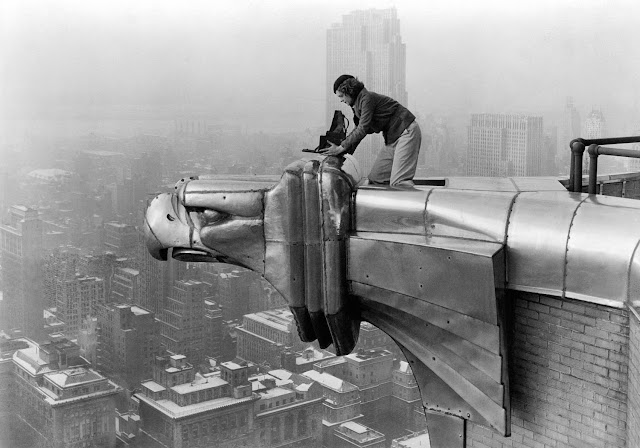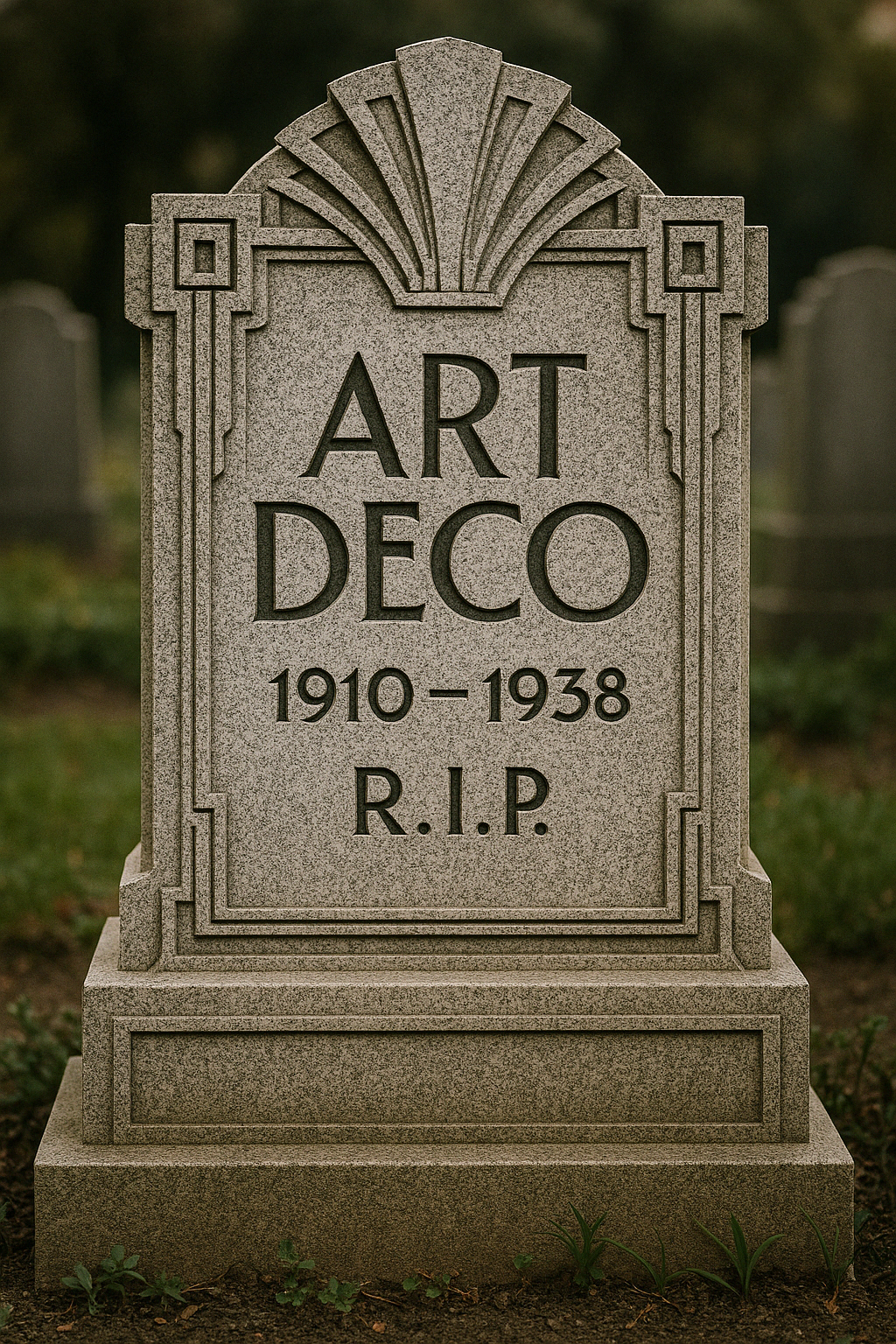Ninety-five years after its completion, the Chrysler Building remains one of New York City’s most iconic landmarks—a beacon of Art Deco design and American ambition.
Completed in 1930 at the height of the skyscraper race, the 1,046-foot tower briefly held the title of tallest building in the world. Designed by architect William Van Alen for auto magnate Walter Chrysler, the structure was intended to symbolize speed, innovation, and modernity—values that defined both the man and the era.
 |
| Van Alen |
The building is rich in automotive references. Winged eagles and radiator caps—direct nods to Chrysler car designs—adorn the upper stories.
Its brickwork and vertical lines emphasize height and momentum, hallmarks of the Art Deco movement.
Inside, the lobby (above) features red Moroccan marble, decorative metalwork, and a ceiling mural celebrating industry and flight.
Though not open to the general public above the lobby level, the building remains a favorite of architecture fans and tourists alike.
While only a few years later, it was eventually surpassed by the Empire State Building in height, the Chrysler Building is often regarded as the more elegant of the two.
It has been called the most beautiful skyscraper in New York—and perhaps the most recognizable Art Deco tower in the world.
CLASSIC ARCHITECT v. CLIENT FEUD
Van Alen designed the Chrysler Building as a bold, futuristic statement that pushed the limits of architecture at the time. He also took some personal financial risks to get it built, including working without a formal written contract.Van Alen believed the prestige of the project—and the promise of fair compensation—would be enough. But after the tower was completed in 1930, Walter Chrysler (left) refused to pay Van Alen his full fee, which was reportedly 6% of the $14 million construction cost—about $840,000 at the time (a massive sum during the onset of the Great Depression).
Chrysler claimed the fee was too high and accused Van Alen of financial impropriety. Van Alen sued—and won.
But the lawsuit ended his relationship with Chrysler and damaged his reputation in the New York real estate world. Developers saw him as difficult and too grand in his vision. Despite designing one of the most celebrated skyscrapers of all time, Van Alen never received another major commission afterward.
So while the Chrysler Building rose to glory, its architect’s career quietly faded.
Classic case of: one man gets the skyline, the other gets stiffed.
Bottom line: Draw up a contract before you begin the project!







No comments:
Post a Comment